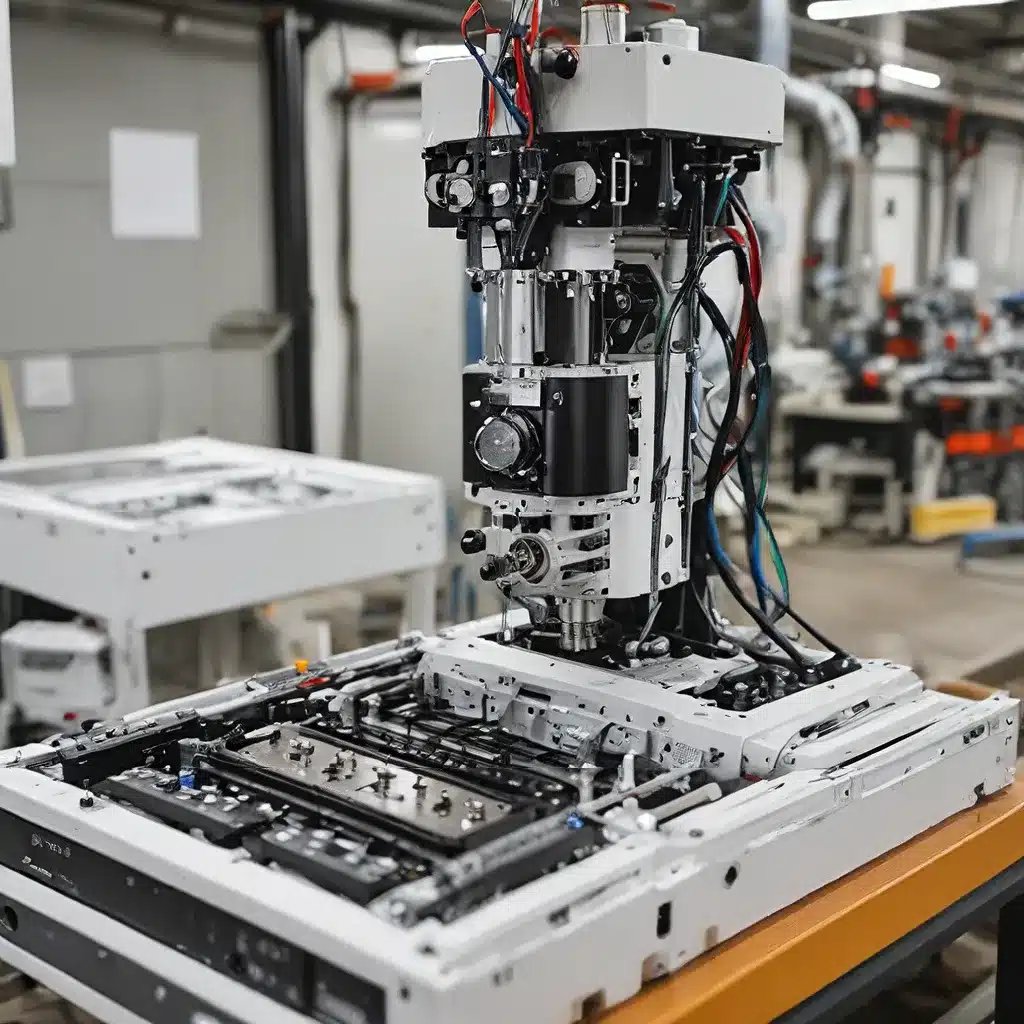
In today’s rapidly evolving digital landscape, where e-commerce is at the forefront of the market, the need for business process automation has become increasingly crucial. Automation offers a myriad of benefits, from increased operational efficiency and cost savings to enhanced customer experiences and improved data-driven decision-making. However, the path to successful automation is not without its challenges, and it requires a strategic and well-informed approach.
Visualizing and Documenting Business Processes
The first step in automating any process is to have a clear understanding of its mechanics. This is where the art of process visualization and documentation comes into play. By leveraging tools like Business Process Model and Notation (BPMN), businesses can create detailed, standardized diagrams that effectively capture the intricacies of their workflows. These visual representations not only facilitate cross-team communication and shared understanding but also serve as a critical foundation for identifying automation opportunities.
According to industry experts, the use of BPMN diagrams can significantly enhance the effectiveness of automation initiatives. By precisely mapping out processes, teams can pinpoint the integration points where various systems, such as Customer Relationship Management (CRM) platforms, order management systems, and marketing automation tools, can be seamlessly connected. This level of process visualization enables the creation of efficient data exchange interfaces and streamlines the ongoing monitoring of these integrations.
Moreover, the availability of user-friendly diagramming tools, like draw.io, has made the process of designing and collaborating on business process documentation more accessible than ever. These cloud-based platforms allow for the creation, sharing, and version control of BPMN and other types of diagrams, ensuring that the entire team can stay aligned on the current state of the process.
Optimizing Processes Before Automation
While the temptation to automate every aspect of a business may be strong, it is crucial to remember that automation is not a panacea. Automating poorly designed or flawed processes can actually exacerbate issues and lead to the faster propagation of errors. Consequently, it is essential to thoroughly analyze and simplify processes before embarking on the automation journey.
In the e-commerce context, this may involve optimizing areas such as order management, logistics, and customer service. The goal is to ensure that the automated processes are logical, clear, and free from unnecessary steps, thereby contributing to genuine operational improvements rather than introducing additional complications.
It is important to note that not all processes are suitable for full automation. Some tasks may benefit from the human touch, such as direct customer interactions or the creation of personalized offerings, as automated systems may lack the necessary intuition or flexibility. In such cases, a judicious approach of partial automation, which streamlines specific actions while preserving the human element, may be the most effective strategy.
Monitoring and Testing for Seamless Automation
Effective automation requires vigilant monitoring and thorough testing to ensure the smooth functioning of the implemented solutions. Immediately after the deployment of automation, it is crucial for both managers and teams to remain highly attentive and ready to respond promptly to any potential issues that may arise.
Meticulous planning and the development of well-defined escalation and prioritization procedures can significantly mitigate the risk of disruptions to business operations. Clear guidelines for informing the appropriate personnel and determining the appropriate course of action can help avoid confusion and chaos during critical situations.
Continuous monitoring of the automated processes is essential for maintaining business continuity in the e-commerce industry. By closely tracking the performance and functionality of the systems, organizations can quickly identify and resolve any abnormalities, preventing them from escalating into more significant problems. Detailed event logs serve as an invaluable source of information, providing a comprehensive record of all actions, errors, transactions, and other occurrences within the business operations.
Graylog, a powerful log management and analysis tool, stands out in its ability to aggregate logs from various sources and present them in a clear and accessible manner. Its features, such as log filtering, alert systems, and customizable dashboards, facilitate the rapid detection of trends, anomalies, and potential threats, enabling immediate response and minimizing the risk of downtime.
Alongside monitoring, thorough testing of the automated processes is crucial for ensuring their effectiveness and reliability. The establishment of well-designed test environments, which faithfully simulate real-world business scenarios using actual data and hardware/software configurations, allows for the comprehensive evaluation of system performance and the early identification of potential issues. Meticulously crafted test scenarios covering a wide range of use cases, from basic functionalities to advanced workflows, help to validate that each component of the automation is operating as expected and meeting the defined business requirements.
Furthermore, when dealing with sensitive customer data during the testing phase, it is essential to implement appropriate measures for data anonymization or randomization to protect the privacy and security of the information. Safeguarding customer data is not only a legal requirement but also a critical element in building trust and maintaining a positive brand reputation.
Choosing the Right Integration Technology
The selection of the appropriate integration technology is a critical factor for the success of e-commerce systems. While a variety of options, such as SOAP, REST API, GraphQL, and even traditional CSV files, are available for data exchange, the technology itself does not automatically guarantee a high-quality solution. Careful consideration must be given to factors such as the volume of data to be processed and the frequency of updates to ensure the selected interface is well-suited to the specific requirements of the business.
In the context of handling large data sets, techniques such as event-driven processing or DIFF-based data exchange can contribute to more efficient data sharing. While these approaches should be considered as complementary to the primary integration system, there may be specific scenarios, such as initial system population or failover procedures, where a comprehensive data exchange approach is necessary to maintain data consistency and ensure business continuity.
Leveraging Cloud-based Integration Tools
The rise of cloud-based integration platforms, such as Zapier and Make.com, has made automated integration between various online applications and services more accessible than ever. These platforms enable users to design workflows without the need for complex coding, utilizing the „if this, then that” (IFTTT) mechanism to quickly connect applications and automate routine tasks. This can be a valuable tool for efficiently managing business processes.
However, it is important to recognize the limitations of these cloud-based tools. While they excel in simple scenarios and prototyping, they may not be suitable for more complex, mission-critical, or security-sensitive applications. Processes that require complete control, high transparency, advanced security features, or specialized business logic may exceed the capabilities of these platforms. Additionally, the recurring costs associated with the use of these cloud-based tools can potentially outweigh the benefits of automation, as experienced by some Baselinker customers.
Achieving Sustainable Automation Success
Ultimately, the success of automation and integration in the e-commerce landscape is not solely dependent on the utilization of modern technologies but rather on a well-thought-out approach and a deep understanding of the underlying business processes. Careful planning, ensuring transparency, and adapting processes for automation are key to achieving effective and reliable automation.
Equally important as the selection of tools is the thorough testing and continuous monitoring of the implemented solutions, which ensures the smooth operation, reliability, and operational efficiency of the systems. In the e-commerce industry, where every decision impacts customer satisfaction and financial performance, there is no room for haste or lack of precision. Therefore, a strategic and mindful approach to the entire integration process is crucial for ensuring the effectiveness of automation.
To receive personalized advice or a project estimate for your e-commerce business, we encourage you to visit stronyinternetowe.uk and take advantage of our comprehensive services.
The Evolution of Content Automation
In the digital era where content is king, effective management and distribution of content pose a challenge for many organizations. Customers expect timely, personalized, and engaging content that is delivered in the right place and at the right time. Traditional content management methods often struggle to keep pace with the rapidly changing market and growing consumer demands. This is where content automation comes into play.
Content automation refers to the use of advanced tools and technologies to automate the processes of creating, publishing, and managing content. By leveraging content automation, businesses can increase operational efficiency, save time and resources, and improve the consistency and quality of their marketing campaigns. It also enables precise personalization of content at scale, which in turn translates to greater audience engagement and better business results.
In this article, we will explore why content automation is a necessity for modern businesses. We will discuss the key benefits it offers, such as increased efficiency, improved personalization, better content lifecycle management, and optimized marketing activities. We will also present examples of companies that have successfully implemented content automation and share best practices to help you effectively integrate this technology into your organization.
The Key Elements of Content Automation
Successful content automation requires the right tools, a well-defined strategy, and the management of digital assets and business processes. Here are the critical elements that are essential for effective content automation:
Tools:
The selection of appropriate tools is crucial for successful content automation. These tools assist in the creation, management, and distribution of content, such as content management systems (CMS), marketing automation platforms (e.g., HubSpot, Marketo), social media management tools (e.g., Buffer, Hootsuite), and analytics platforms (e.g., Google Analytics, SEMrush).
Content Marketing Strategy:
A solid content marketing strategy is essential for effective content automation. This strategy should encompass planning, creation, distribution, and analysis of content to ensure it aligns with the overall business objectives.
Digital Asset Management (DAM):
Effective management of digital assets, such as images, videos, and other media, is a key component of content automation. A well-structured DAM system enables the organized storage, retrieval, and distribution of these assets, ensuring consistency and efficiency.
Business Process Automation (BPA) and Workflows:
Automating business processes and workflows is crucial for streamlining content management tasks, from content creation and approval to publishing and distribution.
Monitoring, Analysis, and Optimization:
Continuous monitoring, analysis, and optimization of content performance are essential for continuously improving content marketing strategies and achieving better business results.
Personalization and Segmentation: The Cornerstone of Content Automation
Content personalization and segmentation are at the heart of content automation, enabling businesses to deliver more relevant and engaging content to their audiences. By leveraging advanced tools and technologies, organizations can create and manage various versions of content tailored to specific customer segments and preferences.
Some key aspects of content personalization and segmentation include:
Audience Segmentation:
Dividing the customer base into smaller, targeted groups based on demographics, behaviors, and other relevant criteria allows for the creation of personalized content experiences.
Dynamic Content:
Dynamically changing content based on user data and interactions, ensuring that the content remains relevant and tailored to each individual’s needs and preferences.
A/B Testing:
Conducting A/B tests to compare the performance of different content variations and optimize for maximum engagement and conversion rates.
Localization and Culturalization:
Adapting content to specific geographic markets and cultural contexts to enhance relevance and resonance with local audiences.
Content Lifecycle Management:
Streamlining the entire content lifecycle, from planning and creation to publication, distribution, and ongoing optimization, to ensure content remains up-to-date and effective.
Content Automation in Action: Success Stories
The benefits of content automation have been recognized by various industries, with leading companies successfully leveraging this technology to drive their marketing and business strategies. Let’s explore a few examples:
Netflix:
Netflix is renowned for its effective use of content automation to personalize movie and TV show recommendations, significantly enhancing user engagement and driving subscriber growth.
HubSpot:
As a leading provider of CRM and marketing automation solutions, HubSpot itself utilizes content automation to improve its own marketing efforts and sales performance.
Sephora:
The global cosmetics brand Sephora employs content automation to personalize customer communications and automate its marketing campaigns, resulting in increased customer engagement and loyalty.
Coca-Cola:
Coca-Cola leverages content automation to efficiently manage its marketing campaigns and personalize content delivery, enabling the brand to connect with customers more effectively.
These case studies demonstrate how different organizations have successfully implemented content automation, achieving remarkable results in terms of operational efficiency, personalization, and overall marketing effectiveness.
Best Practices for Implementing Content Automation
To maximize the benefits of content automation, it is essential to follow a set of best practices. Here are some key recommendations:
-
Define Clear Goals and Strategy: Before implementing content automation, it is crucial to set clear objectives and develop a comprehensive content marketing strategy that aligns with the overall business goals.
-
Select Appropriate Tools: Choose tools that are well-suited to your organization’s needs and capabilities, ensuring they can effectively support your content automation efforts.
-
Prioritize Content Personalization and Segmentation: Leverage the power of personalization and audience segmentation to deliver more relevant and engaging content to your customers.
-
Automate Processes and Workflows: Streamline content-related workflows and business processes to improve efficiency, consistency, and scalability.
-
Monitor, Analyze, and Optimize: Continuously track content performance, analyze the data, and make data-driven decisions to optimize your content automation strategies.
-
Provide Proper Training and Support: Ensure that your teams are well-trained and equipped to effectively leverage the content automation tools and technologies.
-
Maintain Compliance and Data Security: Prioritize data privacy and security, especially when dealing with sensitive customer information, to build trust and maintain a positive brand reputation.
By adhering to these best practices, organizations can successfully integrate content automation into their marketing and business strategies, leading to increased efficiency, improved personalization, better content lifecycle management, and optimized marketing performance.
The Future of Content Automation: Trends and Predictions
The field of content automation is rapidly evolving, and its future holds tremendous promise. As technology continues to advance, businesses will have access to even more innovative solutions that will transform the way they create, manage, and distribute content.
Here are some key trends and predictions regarding the future of content automation:
-
Artificial Intelligence (AI) and Machine Learning (ML): The role of AI and ML in content automation will become increasingly prominent, enabling more sophisticated analysis of data, personalization of content, and autonomous decision-making.
-
Omnichannel Approach: The future of marketing will be defined by an omnichannel approach, integrating various communication channels to provide seamless and consistent customer experiences. Content automation will play a crucial role in managing content across multiple platforms.
-
IoT Integration: The integration of content automation with Internet of Things (IoT) devices will open up new opportunities for data collection and customer interactions, allowing for even more personalized and contextual content delivery.
-
Advanced Workflow Automation: Automation of business processes and workflows will become more sophisticated, enabling dynamic adjustments based on changing data and campaign performance.
-
Increased Focus on Data Privacy and Compliance: As the volume of data and regulatory requirements continue to grow, the importance of data security and compliance will be paramount in the future of content automation.
These emerging trends and predictions highlight the exciting possibilities that lie ahead for content automation. As businesses adapt to these advancements, they will be able to create more effective, personalized, and integrated marketing strategies, ultimately driving better business outcomes.
Conclusion
Content automation has evolved into a powerful tool that can significantly enhance the efficiency and effectiveness of marketing efforts. By leveraging the right tools, strategies, and best practices, businesses can unlock the full potential of content automation, leading to increased operational efficiency, improved personalization, better content lifecycle management, and optimized marketing performance.
As the digital landscape continues to evolve, the future of content automation promises even greater advancements, with the integration of AI, ML, omnichannel approaches, IoT, and advanced workflow automation. By staying attuned to these trends and embracing the power of content automation, organizations can position themselves for sustained success in the ever-changing world of digital marketing.
To receive personalized advice or a project estimate for your e-commerce business, we encourage you to visit stronyinternetowe.uk and take advantage of our comprehensive services.




